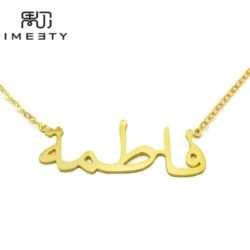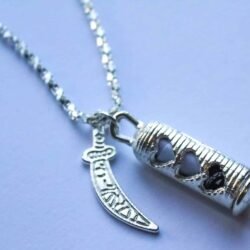Understanding the Significance of Khake Shifa in Islamic Tradition
Comparing Khake Shifa with other sacred Islamic items reveals its unique role in Shia tradition, especially with its deep connection to Karbala. By comparing Khake Shifa with other sacred Islamic artifacts, we can better understand its specific significance in healing, protection, and spiritual practices among believers.
Khake Shifa, also known as the “Soil of Healing,” holds profound importance in Shia Islamic practices worldwide. Derived from the sacred soil of Karbala, it is deeply connected to the martyrdom of Imam Hussain. Many believe that this soil possesses healing properties, both physical and spiritual, making it highly revered. When used in prayer or for healing, Khake Shifa symbolizes a connection to the tragedy of Karbala. In contrast to other Islamic items, Khake Shifa is directly associated with the sacrifice of Imam Hussain.
This unique connection to Karbala gives Khake Shifa a special place in the hearts of Shia Muslims.
However, its significance is not only historical but also deeply spiritual, believed to offer divine protection.
The reverence for Khake Shifa extends beyond its physical properties, reflecting a profound faith in Allah.
Its use in daily life is widespread among Shia Muslims, especially during times of illness or distress.
This sacred soil is often kept in homes, carried by individuals, or used in religious ceremonies.
The belief in its power has been passed down through generations, making it a central part of faith.
-
Product on sale
 Fatima NecklaceOriginal price was: £20.£15Current price is: £15.
Fatima NecklaceOriginal price was: £20.£15Current price is: £15. -
Product on sale
 Fatima Name NecklaceOriginal price was: £20.£15Current price is: £15.
Fatima Name NecklaceOriginal price was: £20.£15Current price is: £15.
Comparing Khake Shifa with Islamic Prayer Beads (Tasbih)
Islamic prayer beads, known as Tasbih, are another significant item used by Muslims during prayer.
Like Khake Shifa, Tasbih holds spiritual significance, aiding believers in maintaining focus during worship.
While Khake Shifa is directly tied to Karbala, Tasbih is more universally used across all Islamic sects.
Both items serve as tools for enhancing spiritual practices, though they differ in their specific purposes.
Tasbih is primarily used for counting prayers, such as reciting the names of Allah or performing Dhikr.
In contrast, Khake Shifa is often used for protection, healing, and as a reminder of Karbala’s sacrifice.
Although different in use, both items symbolize the importance of maintaining a strong connection with God.
While Khake Shifa carries the weight of history, Tasbih is a versatile tool in daily Islamic practices.
Some Muslims may choose to carry both, reflecting their commitment to both remembrance and spiritual growth. Tasbih can be made from various materials, while Khake Shifa is uniquely tied to Karbala soil.
In this way, both items complement each other, offering different paths to spiritual enlightenment and peace.
-
Product on sale
 Kaaba Prayer Rug and Tasbeeh Gift SetOriginal price was: £50.£35Current price is: £35.
Kaaba Prayer Rug and Tasbeeh Gift SetOriginal price was: £50.£35Current price is: £35. -
 Jawshan Kabir Necklace£14
Jawshan Kabir Necklace£14
Khake Shifa and the Role of Zamzam Water in Islamic Healing
Zamzam water, sourced from the sacred well in Mecca, is another revered item in Islamic traditions.
Like Khake Shifa, Zamzam water is believed to possess healing properties, both physically and spiritually.
However, while Khake Shifa is associated with Karbala, Zamzam water is directly linked to the story of Hagar.
This connection to the Prophet Ibrahim’s family gives Zamzam water a unique place in Islamic history.
Both Khake Shifa and Zamzam water are used by Muslims seeking healing and divine blessings in life.
Zamzam water is often consumed or used in ablutions, symbolizing purity and God’s provision for believers.
On the other hand, Khake Shifa is typically applied externally or kept as a protective talisman.
Although their uses differ, both are seen as conduits of God’s mercy, offering spiritual and physical benefits. The widespread availability of Zamzam water contrasts with the specific origin and limited supply of Khake Shifa. However, both items are highly valued by Muslims, reflecting their deep faith in God’s power and compassion. In some instances, both Khake Shifa and Zamzam water are used together for enhanced spiritual healing effects.
-
 Khake Shifa Tasbih & Turbah Gift Set£20
Khake Shifa Tasbih & Turbah Gift Set£20 -
Product on sale
 Khamsa Hand Harness (Silver multi chain)Original price was: £15.£10Current price is: £10.
Khamsa Hand Harness (Silver multi chain)Original price was: £15.£10Current price is: £10. -
 Khamsa Necklace£10
Khamsa Necklace£10
Significance of the Miswak in Islamic Practice
The Miswak, a natural tooth-cleaning stick, is another sacred item with deep roots in Islamic tradition.
Unlike Khake Shifa, which is used primarily for spiritual purposes, the Miswak serves a practical function.
It is recommended by the Prophet Muhammad for oral hygiene, emphasizing its importance in daily Muslim life.
While Khake Shifa is revered for its connection to Karbala, the Miswak is valued for promoting physical health. Both items, though different in use, reflect the comprehensive nature of Islamic teachings, blending faith and practice. The Miswak’s use is a Sunnah, highlighting the Prophet’s guidance on maintaining cleanliness and personal well-being. Khake Shifa serves as a spiritual reminder, connecting believers to the sacrifices made in Karbala.
Khake Shifa holds a distinct place among sacred Islamic items, deeply rooted in Shia tradition. Its unique connection to Karbala sets it apart from other items like Tasbih, Zamzam water, and the Miswak. While each item serves different purposes, they collectively contribute to a holistic Islamic spiritual practice. Khake Shifa’s role in healing and protection complements the practical uses of items like the Miswak and Tasbih. Ultimately, these sacred items, including Khake Shifa, reflect the diverse ways Muslims connect with their faith. Further information, you can Turbah

